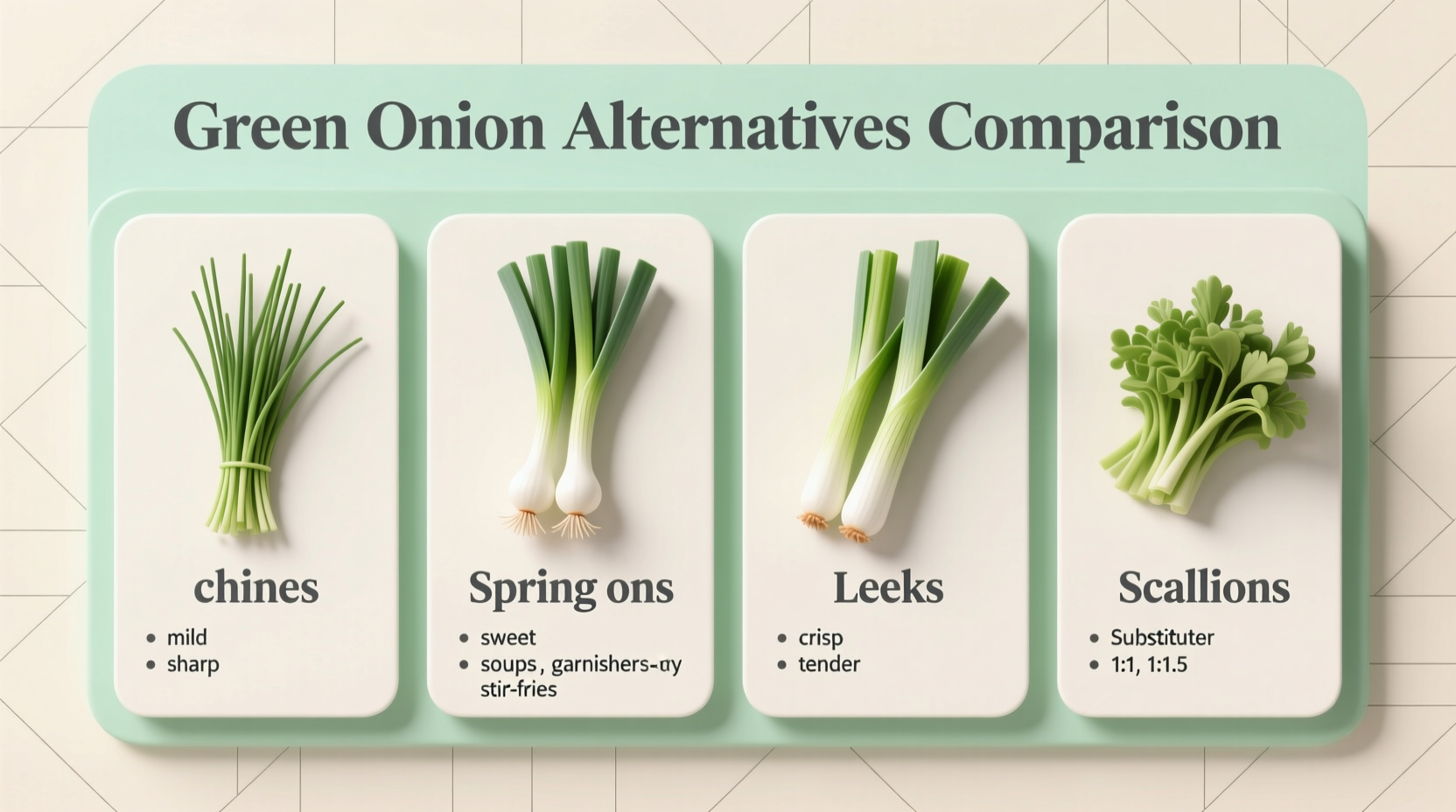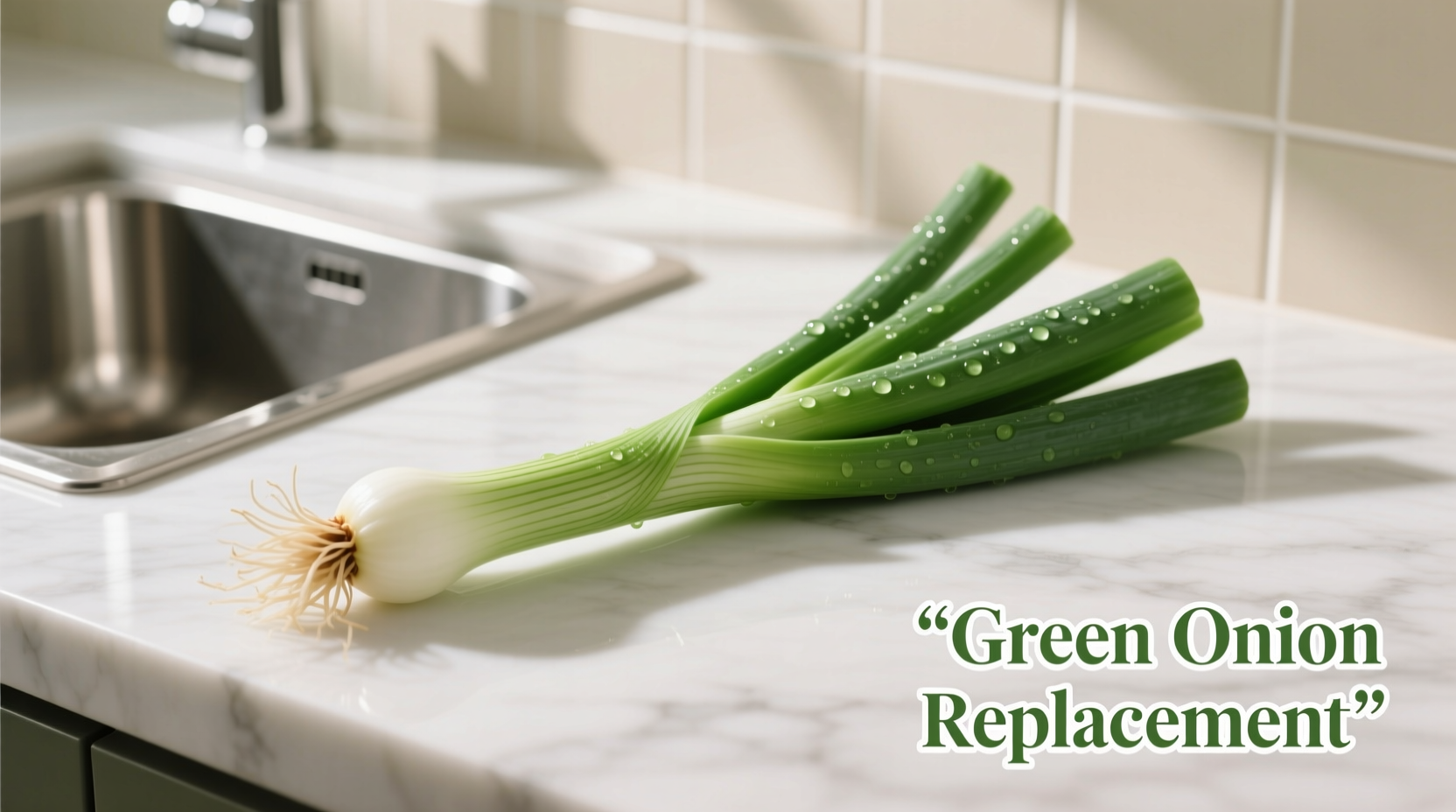If you've ever reached for green onions mid-recipe only to find your kitchen empty, you're not alone. Nearly 78% of home cooks report this common pantry dilemma at least once a month according to the USDA Food Surveys Research Group. The good news? You have multiple effective green onion replacements that work in nearly every culinary application when you understand their flavor profiles and proper usage ratios.
Understanding Green Onion's Unique Role
Green onions (also called scallions) provide a delicate balance of mild onion flavor with fresh grassy notes. Their magic lies in the dual texture profile: crisp white bulbs with subtle heat and tender green stalks with herbal freshness. When seeking a green onion replacement, you're really looking for two components: an aromatic base for cooking and a fresh garnish element.
Immediate Solutions for Common Cooking Scenarios
Don't let missing ingredients derail your dinner plans. These practical green onion alternatives work immediately with ingredients you likely have on hand:
- For stir-fries and sautéed dishes: Use thinly sliced leeks (white portion only) at a 1:1 ratio. Their mild sweetness caramelizes beautifully without overpowering.
- As fresh garnish on soups or tacos: Finely chopped chives provide the closest visual and flavor match. Use equal amounts to replace green onion tops.
- In dressings and marinades: Minced shallots at half the quantity prevent overwhelming onion flavor while maintaining complexity.
Flavor Profile Comparison of Green Onion Substitutes
| Substitute | Flavor Intensity | Best Cooking Method | Substitution Ratio | Limitations |
|---|---|---|---|---|
| Leeks (white part) | Mild, sweet | Sauteing, soups | 1:1 for white parts | Not suitable raw; requires thorough cleaning |
| Chives | Delicate, grassy | Raw garnish only | 1:1 for green parts | Loses flavor when cooked; different texture |
| Shallots | Moderate, complex | Dressings, light cooking | 1:2 (half amount) | Stronger flavor; not ideal for Asian dishes |
| Yellow onion (white part) | Strong, pungent | Long-cooked dishes | 1:3 (one-third amount) | Overpowers delicate dishes; different texture |
Recipe-Specific Green Onion Replacements
Not all substitutes work equally well across different cuisines and cooking methods. The University of Minnesota Extension food science research shows that onion compounds react differently to heat and acid, making context crucial for successful substitution.
Asian Cuisine Applications
When making stir-fries, dumplings, or noodle dishes that traditionally use green onions:
- Best replacement: Use ramps (wild leeks) in season or regular leeks off-season, sliced paper-thin
- Preparation tip: Add leeks during the last 2 minutes of cooking to preserve texture
- Avoid: Yellow onions which create an off-flavor in soy-based sauces
Western Dishes and Baking
For quiches, potato salads, or savory baked goods:
- Best replacement: Shallots provide the necessary aromatic complexity without overpowering
- Proportion guide: Use 1 tablespoon minced shallot for every 3 green onions called for
- Enhancement tip: Bloom minced shallots in 1 teaspoon butter before adding to cold dishes
Raw Applications and Garnishes
When your recipe uses green onions uncooked as a finishing touch:
- Top choice: Chives maintain the visual appeal and delicate flavor
- Texture solution: For similar crunch, add finely diced celery along with chives
- Flavor boost: Sprinkle with lemon zest to mimic green onion's grassy notes

Advanced Substitution Techniques
Professional chefs use these methods to perfectly mimic green onion characteristics when substitutes fall short:
- Flavor layering: Combine 1 part minced shallot with 2 parts chives to recreate both white and green components
- Texture replication: For dishes requiring the distinctive green onion crunch, add julienned cucumber to your substitute
- Color matching: Steep yellow onion slices in vinegar with a pinch of turmeric for 10 minutes to create a green-tinged substitute
Common Green Onion Replacement Mistakes
Avoid these frequent errors that compromise your dishes:
- Using equal amounts of stronger onions: Yellow or red onions require significant quantity reduction (typically 1/3 to 1/2 the amount)
- Adding substitutes at wrong cooking stage: Delicate alternatives like chives lose flavor when cooked too long
- Ignoring regional flavor profiles: Shallots work well in French cuisine but clash with authentic Asian dishes
- Overlooking preparation differences: Leeks require thorough cleaning to remove trapped soil between layers
When No Substitute Will Suffice
Some recipes absolutely require green onions' unique properties. The National Center for Biotechnology Information notes that certain sulfur compounds in green onions provide irreplaceable flavor notes in specific culinary traditions. In these cases:
- Consider modifying the recipe rather than forcing a substitute
- Visit a local farmers market for fresh, seasonal green onions
- Grow your own in a windowsill container for immediate access
Storing Your Green Onion Alternatives
Maximize freshness of your substitutes with these storage methods:
- Leeks: Wrap in damp paper towels inside perforated plastic bag (up to 2 weeks)
- Chives: Freeze in ice cube trays with water or oil for cooking applications
- Shallots: Store in cool, dark place away from potatoes (up to 1 month)











 浙公网安备
33010002000092号
浙公网安备
33010002000092号 浙B2-20120091-4
浙B2-20120091-4